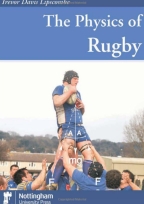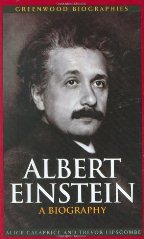

Blending simple physics with anecdotes from the world of rugby, this informative reference demonstrates how to improve rugby techniques. Tackling, passing, running, and kicking are analyzed from a scientific perspective, incorporating Newton�s Laws, and then discussed in the wider context of the game. This valuable guide will not only instruct but also entertain sports-oriented students of all levels.
Learn More
Lipscombe et al. covers the entire history of this brilliant physicist's life and career, including his: early education; struggles to find an academic position; troubled marriages and family life; rise to international fame and using this fame to fight for world peace; and Einstein's major contributions to physics, explained in ways that can be understood by anyone.
Learn Morewith C. E. Mungan. published in International Journal of Mathematical Engineering and Science 3(3) (2014). They propose a mathematical method to work out at what frequency an object subjected to certain types of forces, vibrates.
Learn MoreBritish political (and other) missions to Bhutan spawned scholarly publications. These included addresses delivered to the meetings of learned societies and subsequently printed in scholarly journals, or else published as books. Such publications conjured up an image of Bhutan that fit the aims and interests of the expanding British Empire, and there was a broad audience for such works, whether scholarly or popular. This article explores the publication history of the first British book concerning Bhutan, Captain Samuel Turner’s Account of an Embassy to the court of the Teshoo Lama in Tibet containing a narrative of a journey through Bootan and part of Tibet, which appeared in 1800.
Learn MoreWhile laying new carpet in our house, seeing all the carpet rolled up neatly in a spiral, I wondered how long it would take to unroll if it were kicked. Turns out the standard theory doesn't agree with experiment. Published with Carl E. Mungan in the European Journal of Physics.
Learn MoreThe brachistochrone problem consists of finding the track of shortest travel time between given initial and final points for a particle sliding frictionlessly along it under the influence of a given external force field. Solvable variations of the standard example of a uniform gravitational field would be suitable for homework and computer projects by undergraduate physics students studying intermediate mechanics and electromagnetism. An electrobrachistochrone problem is here proposed, in which a charged particle moves along a frictionless track under the influence of its electrostatic force of attraction to an image charge in a grounded conducting plane below the track. The path of least time is found to be a foreshortened cycloid and its properties are investigated analytically and graphically. Published in European Journal of Physics 39(3) (2018) 035006.
Learn More